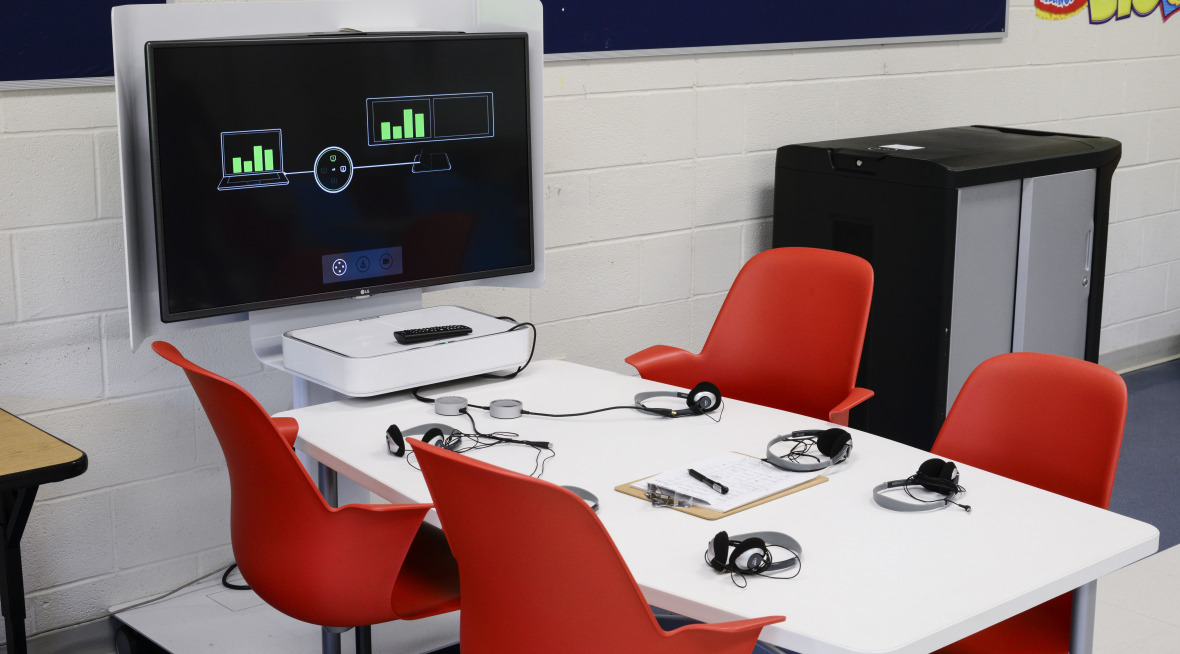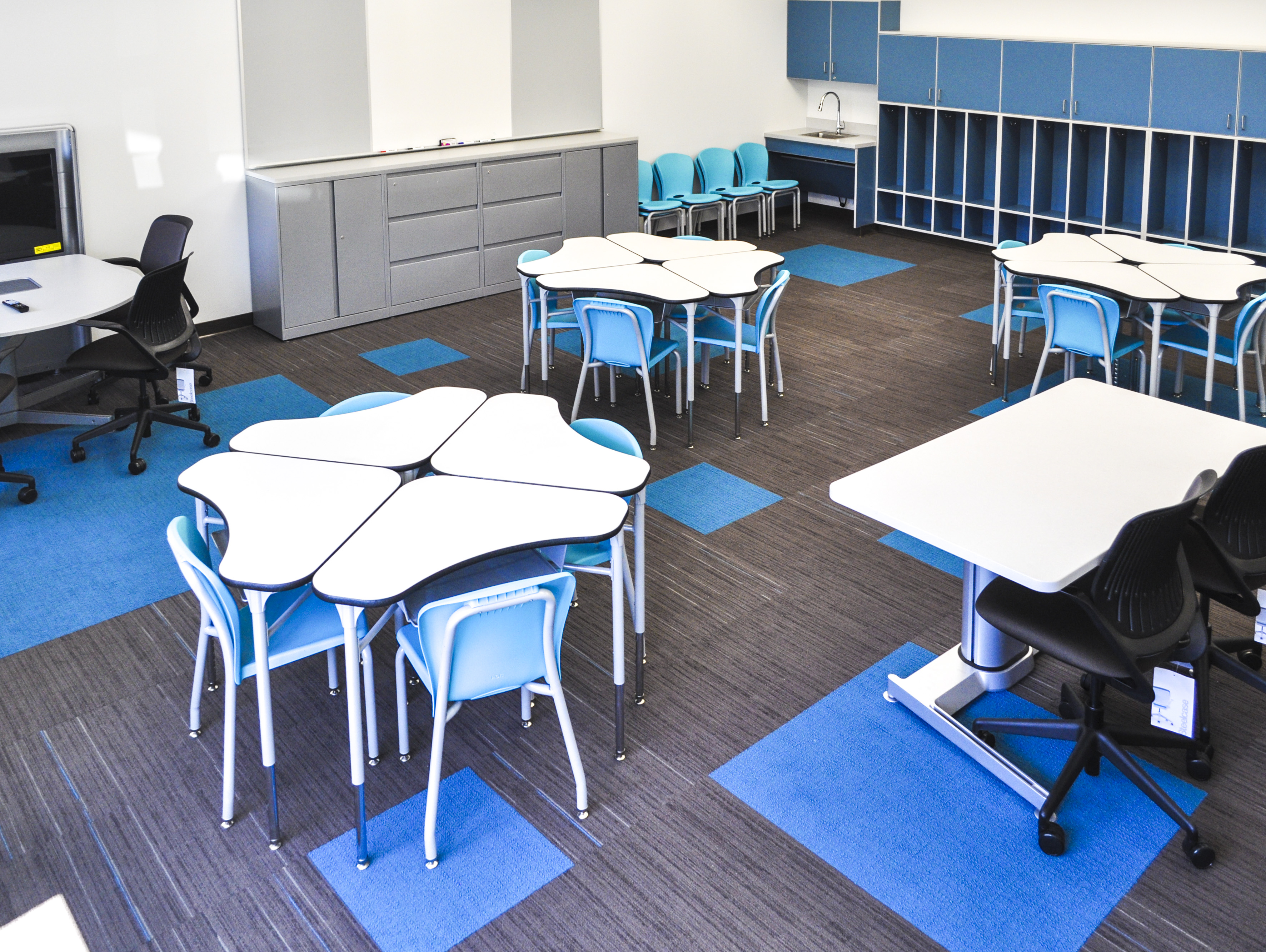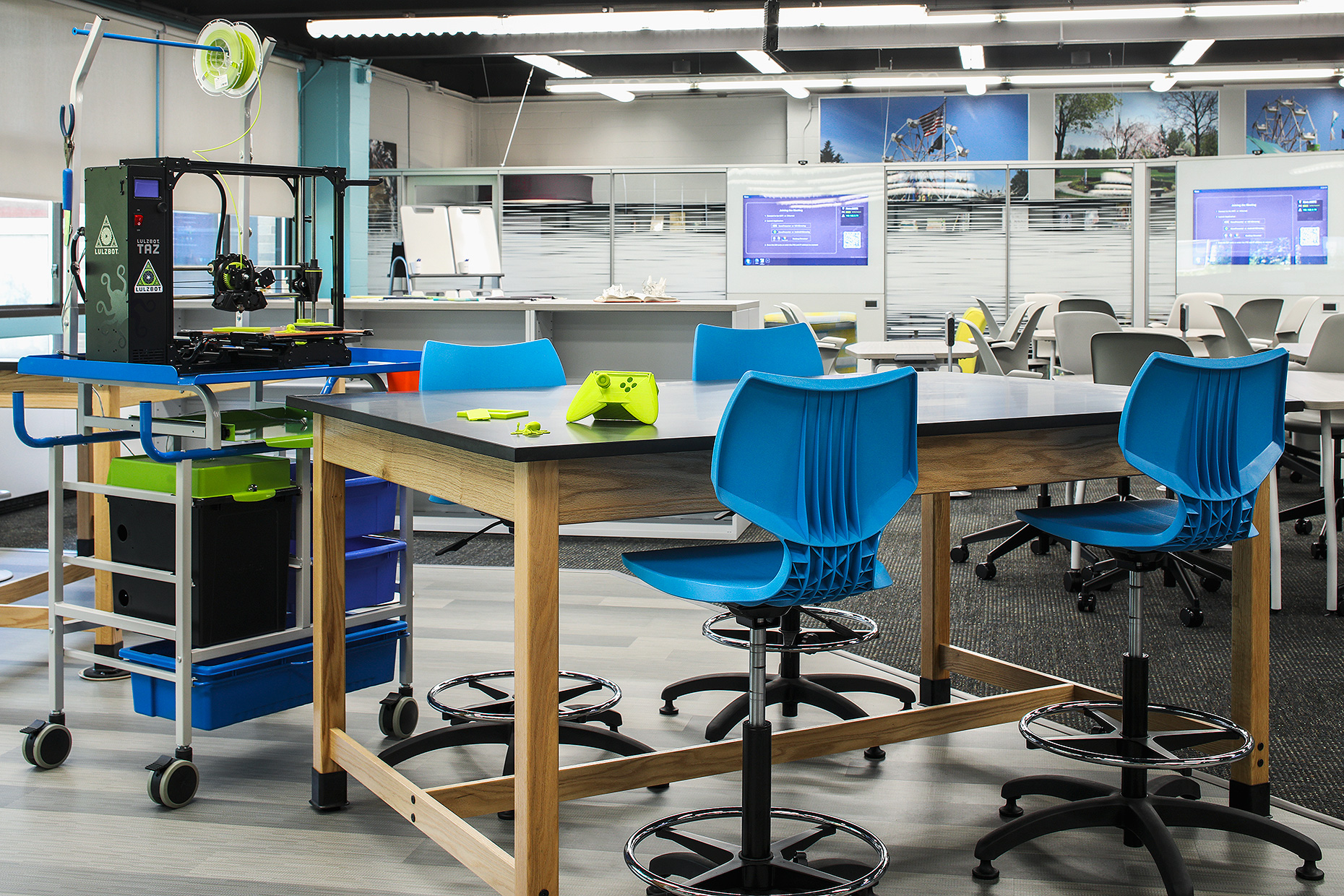We use cookies to maximize your online experience with us. By closing this window, you consent to our cookie policy. You can change your cookie settings in your browser any time. For more information, please see our Privacy Policy located on the footer of this site.
Learning Spaces Evolved: Moving Classrooms Forward with Active Learning

In these unprecedented times, schools across the U.S. have been forced to close in order to help slow the spread of the COVID-19 Coronavirus. Many education systems have sent kids home with materials and tools that help them continue to learn outside of the classroom, leveraging technology to keep everyone connected.
Communities are coming together virtually not only to protect everyone’s health, but also to keep minds engaged and to preserve mental well-being in all age groups. While many educators feel uncertain about what might come next, there are glimmers of hope. Students will eventually return to their schools with renewed excitement to learn and relief to be back with their classmates and teachers. It’s likely they’ll also return with new skills they’ve acquired by learning in their living rooms, kitchens and backyards, as well as online. This is 21st century active learning without boundaries… mobile, flexible education. How can we get classrooms, and kids, ready for the future?
SHIFTING FROM THE 3 R’s TO THE 4 C’s
For generations, educational curriculum has been based on principles of reading, writing, and arithmetic. While these fundamentals remain, in recent years the emphasis has shifted to science, technology, engineering and math (STEM) to prepare today’s young learners for high-tech careers. School systems are also adopting new methods of instruction that focus on the four C’s: critical thinking, communication, collaboration and creativity – qualities that not only shape future contributions to the workplace but also to society as a whole.
21st century learning is often marked by an integrated curriculum that, as Education Week reports, “[blends] subjects in order to develop students as comprehensive problem solvers, and [develops] teacher skills to create inter- and trans-disciplinary learning environments.” Rather than focusing solely on a single instructor (who’s focused on a single subject) stationed at the front of the classroom to deliver information, the 21st century classroom shifts to empower students to discover the same information on their own through creative problem solving and decision making. This approach “[removes] the barriers of old mindsets that limit children and separate learning into content areas, and [invites] partnerships with business and higher education to join the teaching and learning process.”
PROVIDING FLEXIBLE SPACES FOR ACTIVE LEARNING
These new styles of teaching and learning require new kinds of spaces to support them. Classroom furniture must be mobile, flexible and adaptable to allow and encourage movement throughout the day. Not only does it allow kids to get up from their chairs, mobility also empowers teachers to adjust the configuration of their classrooms as they move through their daily lesson plans. One moment they’re guiding the class through small-group teamwork. Later the whole class is working together (each armed with his or her own digital device) to solve problems that are presented on an interactive white board at the front of the room. Similarly, quiet focus time comes into play when students are tackling individual assignments. Desks, chairs, tables, power sources, even walls can all move and flex to support each task.
Active classrooms also support kinesthetic learning – the practice of learning by doing, with movement that keeps blood flowing to the brain and improves focus. As dancker’s account executive, Maureen Tracy, suggests based on her own personal experience as a teacher, “kids need movement to help them stay engaged. I’ve often said that stagnant chairs make for boring stares. Chairs that move keep you in the groove.”
Ancillary furniture helps to improve student engagement even further, just as it’s increasingly seen in office environments to support diverse styles of working and keep employees engaged. Providing students with choices helps them feel more in control, and acknowledges that students have different learning styles. Some prefer to sit by themselves while others want to work in groups. And similarly, some students want to sit upright at a traditional desk, while lounging is the preferred posture for others. Walking into a classroom and seeing a variety of comfortable, colorful furniture makes learning more exciting and fun.

At The Newmark School in Scotch Plains, New Jersey, dancker and Steelcase worked together with Newmark Education to create an active learning environment that empowers students with diverse special needs to reach their full potential. Unlike traditional classrooms, the physical space isn’t limiting. It’s comfortable and inviting, and it continuously adapts as needs change and technology evolves. As this video illustrates, technology improves the seamless interaction between students and teachers, using tools that students are inherently comfortable with. By removing the physical barriers that are common in conventional classrooms, Newmark can achieve its mission to reach a population of students that other schools can’t properly serve.
ADDING VALUE THROUGH CUSTOMIZED CREATIVE SOLUTIONS
Each district, school and teacher is as diverse as the student body so each requires a personalized approach to classroom design. Mary Lynn Kearns, an account executive at dancker, explains: “we add value by looking at each project holistically and then coming up with the best, most relevant solutions to the client’s specific needs. We’re not just looking at the furniture, we’re also looking at architectural walls and technology. It’s all integrated and customized for the people who use the space. At the start of a project I’ll sit in the classroom myself and observe the teachers and students, watching how the learning process unfolds. While every educator has a different style, watching their process allows us to work with them to co-create an adaptable solution that can work for everyone.”
“Our deep knowledge base and decades of experience enables us to make these recommendations,” adds dancker’s DC-based account executive, Marcie Mayher. “We’re not simply picking items from a catalog or list. We are motivated to understand each school’s and each classroom’s unique personalities and processes. And then we help clients understand their options in order to make informed decisions.” Because we’ve taken the time to gather research and observe each classroom in action, we can go into the ‘why’ of each recommendation – our experience-backed understanding of the positive impact these improvements will have on the classroom’s long-term effectiveness.
CONFRONTING THE COSTS OF CHANGE
dancker’s experience also helps us recognize that funding can be a challenge, especially for clients in the education sector. We always recommend starting with the big picture ideas – don’t worry about prices at the beginning of a project. As our clients’ trusted advisor, we’ll always work to find the most effective and most affordable solutions. We’ll also help to find creative sources of funding, which might include Steelcase pilot programs and grants.

When we worked with Mountain View Middle School to transform their library into a media-rich learning commons, we understood from the beginning that they faced significant budget constraints. We first created plans that would optimize small spaces through a combination of furniture, technology (including sound masking technology, which is particularly important in library settings), paint and graphics. And then we helped them present that vision to parent groups and other stakeholders. We empowered them to tell their own story of why they needed to make these investments and what benefits they would gain. Parents immediately understood the importance and helped the project find all necessary funding.
The case was similar with Little Falls Middle School. We created presentation materials that they could share with potential donors to attract funding, considering that they might ‘sell’ their classroom upgrades piece by piece. Aided by our design tools, the client’s vision and the benefits of the proposed renovations were so clear that a single investor gave them the funding they needed right away.
FUTURE-PROOFING BY LOOKING FORWARD
Clients and their (often corporate) donors recognize that by investing in today’s students and giving them spaces that are better equipped for active learning, they’re ultimately building a better workforce for the years ahead. By leveraging the fundamentals of the way people work – design thinking, problem solving, and collaboration achieved through workplace cultures of autonomy, flexibility and agility – we can ensure that the academic and corporate sectors of our society advance in parallel.
It’s incredibly fulfilling to see the results of these projects – the smiles on the faces of both teachers and students when they enter new spaces, or the pride felt by administrators, donors and parents. Whole communities benefit from making schools, classrooms and libraries more active and better connected. Today more than ever as we’re trying to figure out ways to keep our communities strong and our kids safely engaged, we all have an opportunity to pave the way forward.
We’re here to help you and your students – contact us today to learn how to begin the journey of transforming classrooms into active learning spaces to benefit your school.

